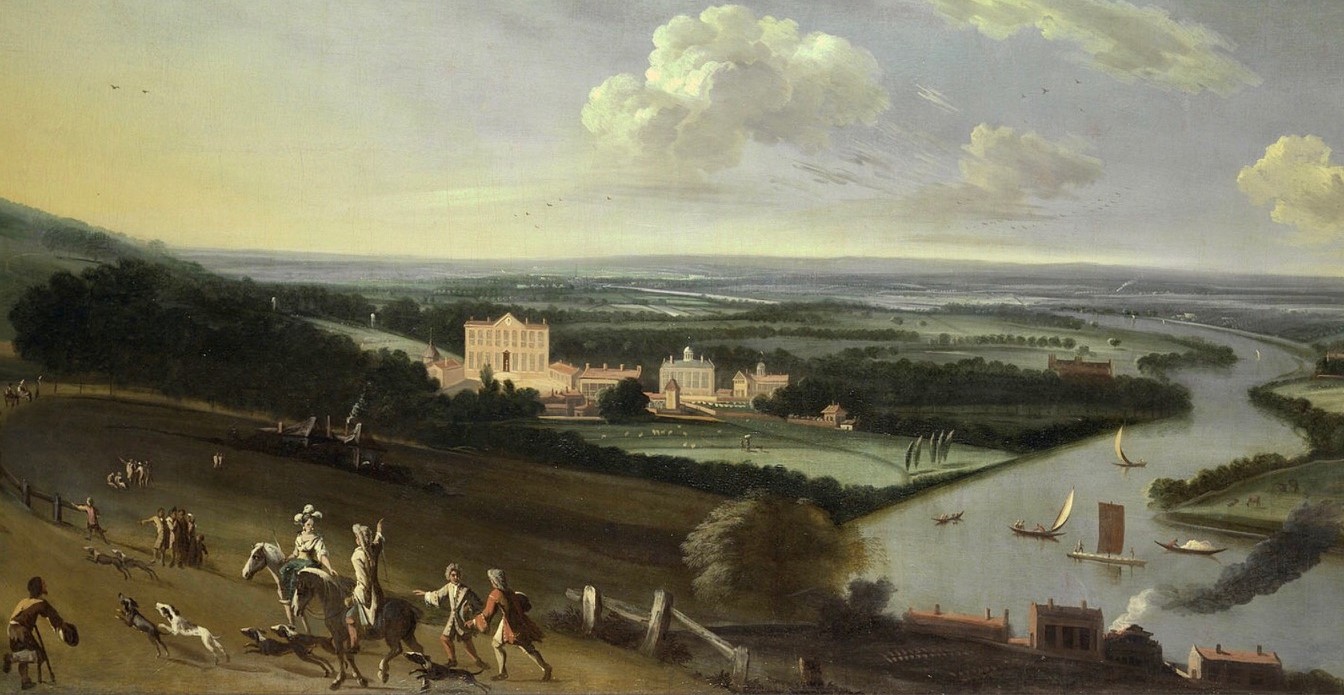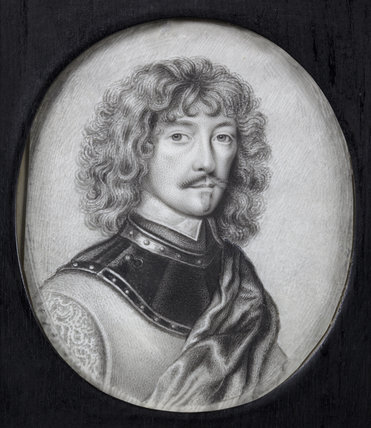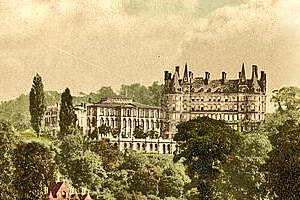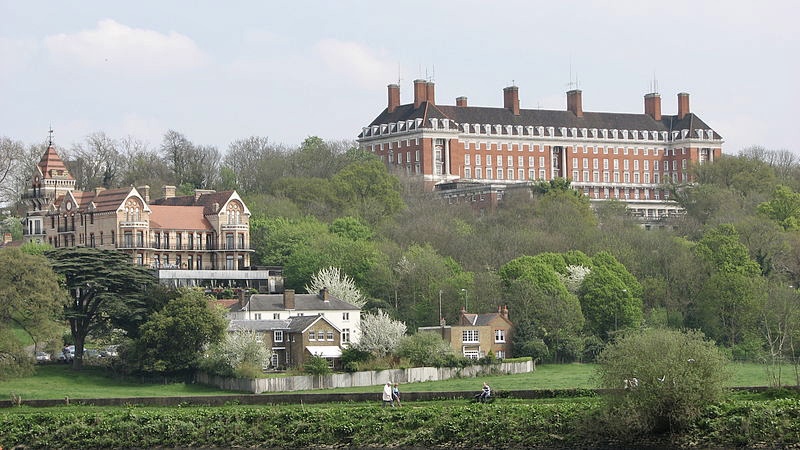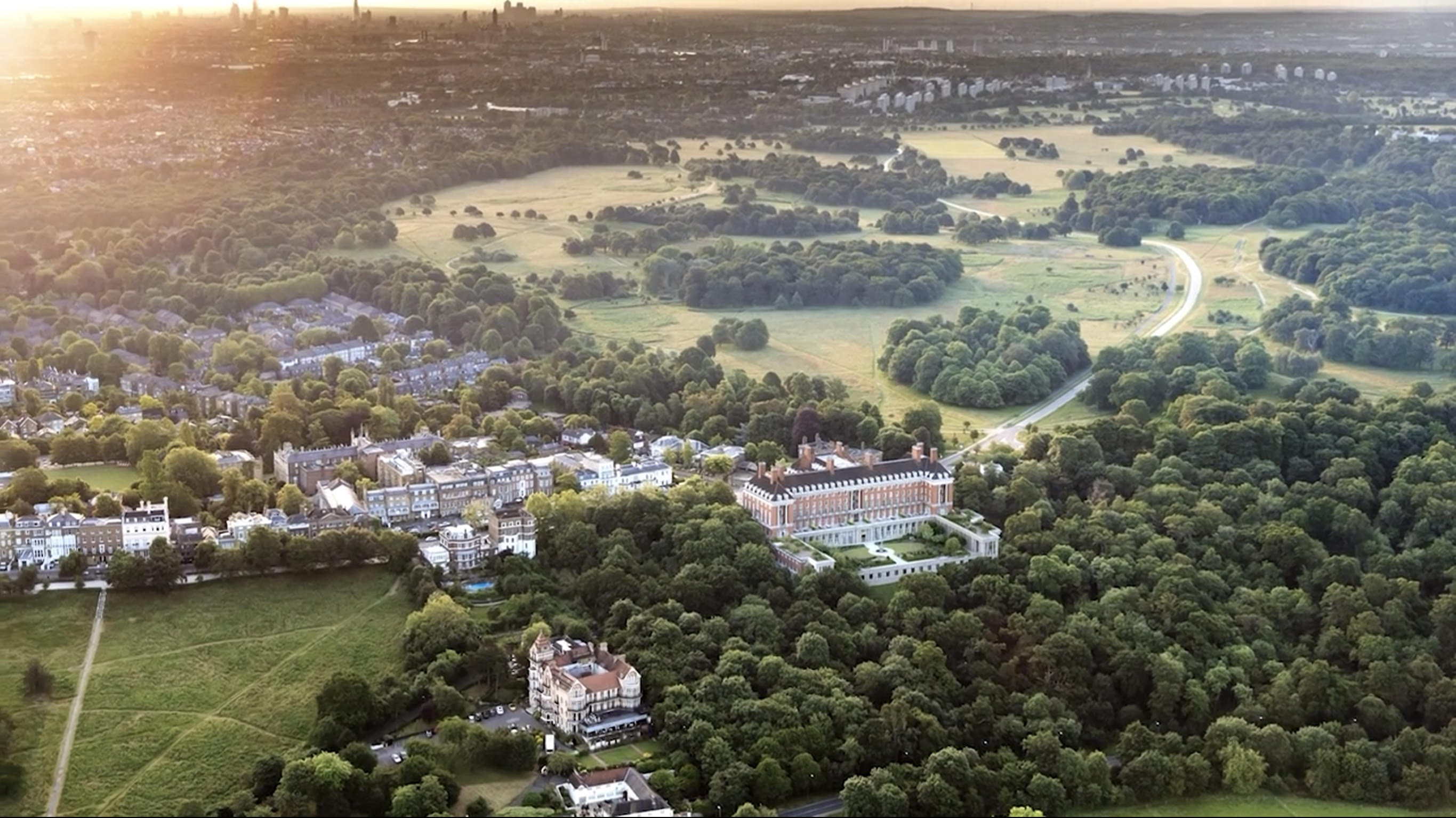Looking South from Richmond Hill, Petersham Common Woods can be seen on the left. Attributed to Adriaen van Diest c.1700.
A Brief History
For many centuries the woodland and much of the surrounding area was used as common land for the pasturing of animals and gathering of firewood. First belonging to Chertsey Abbey, the land was surrendered to the Crown in 1415, and remained Crown property until 1647 when King Charles I granted the lease of the manor of Petersham, including Ham House, to his 'whipping boy' William Murray.
In the early 1600s the broader area, including neighbouring Hill Common, was eroded by grants of land to tilemakers whose tile kilns had been set up between Petersham Road and the river in the reign of Elizabeth I. "So eagerly did the tilemakers dig out clay, sometimes outside the land granted to them, that the manor records are full of complaints that landslides were caused." (John Cloake, Richmond Past, 1991).
The tile kilns were closed in 1767, by which time Petersham was already well established as a desirable site for grand 'rural' residences away from London, thereby attracting more social and recreational visitors.
William Murray, first Earl of Dysart.
The prosperity of the area was also reflected in a large number of almshouses for the poor and some of these were situated on the Common along the Petersham Road until they were destroyed in the mid 20th century.
Petersham Common remained in the Dysart estate for over 250 years, but by the end of the 19th century it had become an inpenetrable jungle of undergrowth, reminiscent of the blood-curdling tales of the Brothers Grimm*. Recognising that common land would be better managed by elected representatives, parliament transferred ownership of Petersham Common from the 9th Earl of Dysart, William Tollemache, to the Borough council in 1900. A body known as the Petersham Common Conservators was established, who continue to manage the Common to this day. For more details, including the ecological strategy, see Woodland Management.
*from an article by Arthur Godfrey, published in the Richmond & Twickenham Times (3rd September 1966) as cited in the Journal of the Richmond Local History Society 2007 (Number 28)
The Star & Garter Hotel
Postcard of the hotel at the peak of its popularity in the late 19th century. Charles Dickens regularly held events there, including a celebration of the publication of David Copperfield (1850), attended by fellow writers Tennyson and Thackeray.
Notable amongst early local buildings was the Star & Garter on the eastern edge of the Common near the entrance to Richmond Park. The Star and Garter evolved from a tavern, first established in 1738, into an extravagant French-chateau style hotel by the late 19th century, frequented by royalty and nobility.
After the First World War the hotel was demolished and rebuilt as a home for war veterans. The Star & Garter hotel name was then, until the 1970s, borne by the hotel now known as The Petersham Hotel.
By 2011, Royal Star & Garter Homes announced that the building could no longer serve the needs of its dwindling number of residents, and it was sold for luxury residential development in 2013. A sympathetic restoration was completed in 2017. Click here for more detail on the fascinating history of the Star & Garter hotel.
The Petersham Hotel (left) and Star & Garter in the 21st Century
Aerial shot looking east towards Richmond Park and the London skyline with Petersham Common Woods in the foreground.
For more historical paintings and photographs of Petersham Common Woods and its surroundings, see our Historical Archives album.

